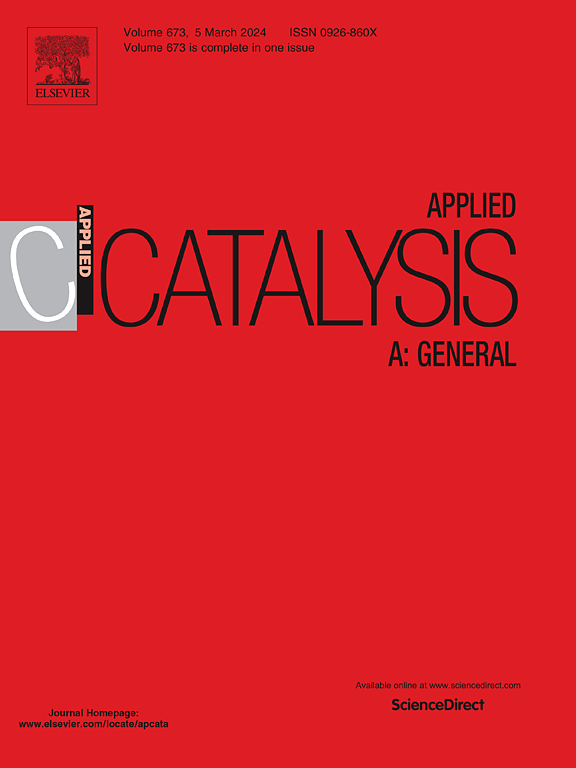Machine-learning-assisted catalytic performance predictions of binary alloy catalysts for glucose hydrogenation
IF 4.7
2区 化学
Q2 CHEMISTRY, PHYSICAL
引用次数: 0
Abstract
Sorbitol production involves glucose hydrogenation, which requires co-adsorption of glucose and hydrogen on the catalyst surface for high catalytic performance. Binary alloy catalysts can modulate substrate adsorption to achieve better catalytic performance than Raney Ni. Herein, we established a pioneering DFT/ML approach to investigate the adsorption energies of glucose (ΔEGCHO) and H atoms (ΔEH) on 1155 binary alloy catalysts. The Light Gradient Boosting Machine (LGBM) algorithm proved the most effective ML model, predicting ΔEGCHO and ΔEH with R² values of 0.785 and 0.636, respectively. Microkinetic simulation demonstrated a correlation between catalytic activity and adsorption energy, revealing high-performance catalyst screening criteria as ΔEGCHO = −1.45 to −0.65 eV and ΔEH = −0.55–0.00 eV. Nine possible binary alloy catalysts with high predicted activity were identified, with Pd3Mg performing best. The present study highlights the potential of the DFT/ML-assisted approach in the development of efficient glucose hydrogenation binary alloy catalysts.
求助全文
约1分钟内获得全文
求助全文
来源期刊

Applied Catalysis A: General
化学-环境科学
CiteScore
9.00
自引率
5.50%
发文量
415
审稿时长
24 days
期刊介绍:
Applied Catalysis A: General publishes original papers on all aspects of catalysis of basic and practical interest to chemical scientists in both industrial and academic fields, with an emphasis onnew understanding of catalysts and catalytic reactions, new catalytic materials, new techniques, and new processes, especially those that have potential practical implications.
Papers that report results of a thorough study or optimization of systems or processes that are well understood, widely studied, or minor variations of known ones are discouraged. Authors should include statements in a separate section "Justification for Publication" of how the manuscript fits the scope of the journal in the cover letter to the editors. Submissions without such justification will be rejected without review.
 求助内容:
求助内容: 应助结果提醒方式:
应助结果提醒方式:


